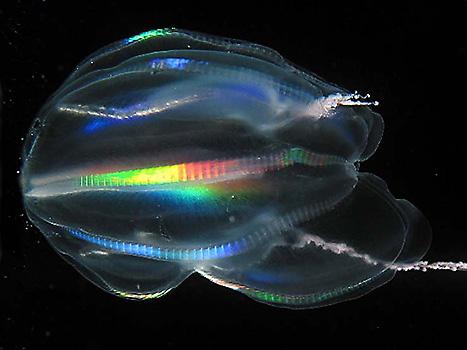The Independent's journalism is supported by our readers. When you purchase through links on our site, we may earn commission.
A jelly is the ultimate ancestor of all animal life, finds study
For nearly 100 years, scientists have thought a sponge was the first type of animal on the planet, but new genetic technique points to a creature like today's comb jellies

Your support helps us to tell the story
From reproductive rights to climate change to Big Tech, The Independent is on the ground when the story is developing. Whether it's investigating the financials of Elon Musk's pro-Trump PAC or producing our latest documentary, 'The A Word', which shines a light on the American women fighting for reproductive rights, we know how important it is to parse out the facts from the messaging.
At such a critical moment in US history, we need reporters on the ground. Your donation allows us to keep sending journalists to speak to both sides of the story.
The Independent is trusted by Americans across the entire political spectrum. And unlike many other quality news outlets, we choose not to lock Americans out of our reporting and analysis with paywalls. We believe quality journalism should be available to everyone, paid for by those who can afford it.
Your support makes all the difference.The earliest form of animal life on Earth was a jelly, according to a new genetic analysis which claims to have overturned one aspect of the theory of evolution.
For nearly a century, it has been thought our ultimate ancestor was a sponge because it is such a simple kind of life.
In 2008, one study suggested comb jellies – or ctenophores – should be accorded this title, but this sparked a major controversy with supporters of the sponge origin theory hitting back.
Now, in a paper in the journal Nature Ecology & Evolution, scientists in the US described how they had specially designed a new kind of genetic analysis to try to settle the question once and for all.
The technique “consistently supports ctenophores [marine jellies] as the sister group to all other metazoans” – multicellular animal life – they wrote.
The researchers, from Vanderbilt and Wisconsin-Madison universities, said that previously scientists trying to work out the relationships between different animals had collected large amounts of genetic data then built a plausible family tree.
Professor Antonis Rokas, of Vanderbilt, said: “This has worked extremely well in 95 per cent of the cases, but it has led to apparently irreconcilable differences in the remaining five per cent.”
Instead, they focused on comparing genes that were shared by all the organisms.
“The trick is to examine the gene sequences from different organisms to figure out who they identify as their closest relatives,” Professor Rokas said.
“When you look at a particular gene in an organism, let’s call it A, we ask if it is most closely related to its counterpart in organism B? Or to its counterpart in organism C? And by how much?”
This still involved examining hundreds or thousands of genes.
The results of this analysis found a so-called “phylogenetic signal” that favoured comb jellies over sponges with considerably more genes supporting the former’s claim to be the original animal.
The same ‘phylogenetic’ technique was used to try to find out if crocodiles are more closely related to birds or turtles.
Some 74 per cent of the shared genes backed the idea that turtles were a sister species, while birds were more like close cousins.
However the researchers said some controversies, such as the origins of modern birds and flowering plants, may remain unsolved.
This was because a single ‘opinionated’ gene was enough to flip the results of the analysis from one species to another, suggesting evolution may have happened too quickly to leave enough of a trace in the genes.
However Professor Rokas said: “We believe that our approach can help resolve many of these long-standing controversies and raise the game of phylogenetic reconstruction to a new level.”
Join our commenting forum
Join thought-provoking conversations, follow other Independent readers and see their replies
Comments